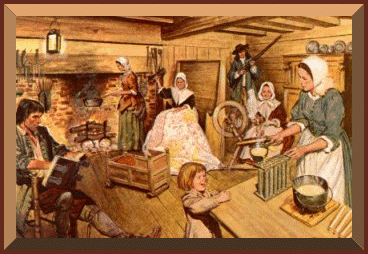

Is she (the widow), the sister of Broer, Anders & Jan thus being the child of SINNICK BROER?

Although the FALKENBERG family line is not our (your Editors') direct line we are also interested in each and every collateral line. After all, they were the siblings of our direct line and related to us.
This particular FALKENBERG line, to me at least, was so very, very fascinating as I had heard the story of the young bride, Penelope VanPrincis, who later married into the STOUT line. It was also very, very interesting because of information I had received indicating it was this FALKENBERG who married the sister of Broer, Anders and Jan and they in turn were the children of our SINNICK BROER, the progenitor of the SINEX and SINNICKSON lines.
What more could I ask for - this was the greatest lead of all.

The following information was gathered at Salt Lake City from various books of New Jersey.

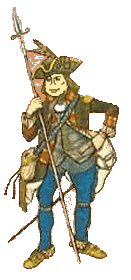
Tradition says that Henry Jacobs Falkinburg was a native of Holland, and that when he settled at Little Egg Harbor he came from Swedesboro, New Jersey. After Falkinburg had concluded his treaty with the natives, he dug a cave on his Down shore tract, on that portion which was later known as the Joseph Parker farm. About thirty years* ago the site of his cave was discernible by a deep indentation in the ground. The cave was situated on the easterly side of a little stream that runs through the Parker farm.
After completing his habitation he furnished it with a few really necessary articles of the rudest description. His table was a rude structure, yet it was loaded with fat venison, wild fowl, fish and oysters, the cooking of which he did himself. For a time he followed the varied occupations of hunter, fowler, fisherman, oysterman and housekeeper -- the latter being a branch of the business he became disgusted, and resolved on quitting the service, and going to look for one more competent for the housekeeping department. He was "Monarch of all he surveyed", and he sighed for "society, friendship and love", and one morning ere the sun had gilded the top of his cave, he arose from his rude couch, arrayed himself in his best home-made suit, partook of a hastily prepared breakfast, shouldered his musket, and set out on foot and alone for Swedesboro, N.J. this was a somewhat tedious and dangerous tramp through the wilderness infested with panthers, bears, wolves and wildcats, yet the pleasing reflection that he was about to meet with "society, friendship and love" served to keep up the courage of the solitary traveler.
Now we must recollect that FALKINBURG was a widower bound on a courting
expedition, and also that widowers do not fancy long and tedious
courtships.
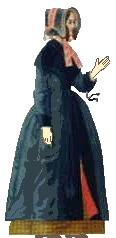
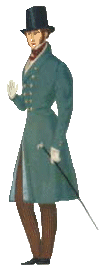
On his return to Egg Harbor he brought his intended wife with him, and soon after arriving at his primitive habitation, he set about making preparations for his wedding, and invitations were given to all his Indian acquaintances on Monhunk (Osborn's Island), Minicunk (Wills' Island), and in other sections of Egg Harbor, and when the guests had assembled he and his fair bride married themselves (according to Friends' ceremony) in the presence of the Indian Kings, queens, ancient warriors and young braves, venerable squaws and back-eyed Indian maidens.
The first white child born in the township of Little Egg Harbor was Henry Jacobs Falkinburg, Jr. He was born in the cave where his father first set up housekeeping, and where he celebrated the first Quaker wedding that took place in that wilderness land. This young and first native Egg Harborman is said to have been the only child of his parents and the inheritor of all of his father's estate.
During most of his married life, Henry Jacobs Falkinburg, Jr. resided on Wills' Island farm. In the year 1731 Henry Jacobs Falkinburg, Jr. married PENELOPE STOUT of Shrewsbury, N. J. This Penelope Stout was a descendant and likewise namesake of the first PENELOPE STOUT who was maltreated by the Indians, but in spite of her murderous treatment, live to see one hundred and eleven years.
Henry Jacobs Falkinburg, Jr's children were John, David, Jacob, Henry, Hannah and Mary. He resided on the farm called Wills' Island, where he died about the close of the revolutionary war, his wife outliving him and reaching the age of one hundred and two years. This island farm had always been designated by the name of its proprietors. While the Falkinburgs possessed it, it was called Falkinburg's Island. The Indians called it Miniconk. The island was the principal Indian settlement in Little Egg Harbor.
John, son of Henry Jacobs Falkinburg Jr married Mary Somers. Their children were Samuel, John, Joseph, Somers, Hannah, Tabitha, Judith and Susanna.
David, son of Henry Jacobs Falkinburg Jr married Faith Cook.
Hannah, daughter of Henry Jacobs Falkinburg Jr in the year 1769 married Richard Buffin.
Hannah & Mary were married at the same place, same time, in the old Friends' meetinghouse at Tuckerton.
Jacob, son of Henry Jacobs Falkinburg Jr. married Phebe Southwick. Only two of Jacobs children have been accounted for, Charles and Caleb.
Henry, son of Henry Jacobs Falkinburg Jr was an idiot, and as he was not capable of making a judicious use of his property, his father did not leave him any of his landed estate, yet he left him a legacy sufficient for his support.
All of the ancient Falkinburgs left Egg Harbor except Samuel, son of Samuel, who was a first son of the first John Falkinburg. there is none of the Falkinburg posterity left in Egg Harbor, except the descendants of the above named Samuel Falkinburg. Captain Samuel Falkinburg was the son of Samuel Falkinburg and Alice Mathis, daughter of Nehemiah Mathis, Sr.
In the year 1715, when the Friends' Monthly Meeting was established at Little Egg Harbor, there was a resident female minister by the name of Mary Jacobs, and the Author of this story felt strongly in the belief that she was the wife of Henry Jacobs Falkinburg, who at that time was usually called Henry Jacobs.
*The book this article was taken from was Copyright 1963 and no other
date at this time is available to the thirty years noted above.

THE PENELOPE STOUT STORY
in part as follows:
She (Penelope Stout) was born at Amsterdam, her father's name was Vanprincis. She and her first husband, whose name is not known, sailed for New York (then New Amsterdam), the vessel was stranded at Sandy Hook, the crew got ashore, and marched towards said New York; but Penelope's husband being hurt in the wreck could not march with them, therefore, he and the wife tarried in the woods.
"They had not been long in the place before the Indians killed them
both, as they tho't, and stripped them to the skinn: however, Penelope
came to, tho' her skull was fractured, and her left shoulder so hacked
that she could never use that arm like the other; she was also cut
across the abdomen so that her bowels appeared; these she kept in her
hand; she continued in this situation for seven days, taking shelter in
a hollow tree, and eating the escrescense of it.

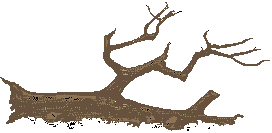
"the seventh day she saw a deer passing by with arrows sticking in it, and soon after two Indians appeared, who she was glad to see, in hope they would put her out of her misery; accordingly, one made towards her to knock her on the head; but the other, who was an elderman, prevented him; and throwing his match-coat about her, carried her to his wigwam, and cured her of her wounds and bruises; after that he took her to New York, and made a present of her to her countrymen, viz. an Indian present, expecting ten times the value in return . . .
It was in New York, that one Richard Stout, married her; he was a
native of Old England, and of a good family; she was now in her 22nd
year; and he in his 40th; she bore him seven sons and three daughters.

Regarding the often told story of Penelope and Richard Stout, alleged to be the first English residents in New Jersey as early as 1648,there are these facts. On the same page as the entry of Thomas whitlock in the Jersey Deed Books where he claims residence from 1664 there is this entry regarding the claim of Richard Stout: "Richard Stout of Midleton brings for his Rights from the yeare 1665 for himselfe, and his wife his two sonns John and Richard 120 acres Each . . . Is . . . 480 acres."
In Gravesend, Long island, Town Records regarding richard Stout, these additional facts are revealed: Richard Stout was in Gravesend, as early as 1643. He received an allotment of land in Gravesend in 1646. In 1649 he sold his Gravesend crop for 210 Dutch guilders. By 1657 he had 17 of his 20 acres at Gravesend under cultivation. In 1661 he bought an adjoining farm. In 1663 he was plaintiff in a slander suit in Gravesend and won his case.
Notwithstanding that Richard Stout may not have come to live in Monmouth until 1665, as the record suggests, the Penelope Stout story is an exciting one and deserves a place in the history of the bay area, for it is on these shores that the scene is laid.
Of the many versions of the story, one in particular can be reconciled
with most of the known facts. It is the story as told in 1792 by Morgan
Edwards, in his book "Materials Towards a History of the Baptists in New
Jersey." Morgan Edwards received his information from Rev. Olvier Hart,
pastor of the Baptist Church in Hopewell, New Jersey, which Richard and
Penelope Stout's son Jonathan, organized in 1715. Mr. Hart, in turn,
got his data from "the mouths of her (Penelope) posterity", probably
great grandchildren in 1780 or later.

REFERENCE: The History of Elizabeth, New Jersey, Rev. Edwin F. Hatfield,
New York, 1868;
Material Towards a History of the Baptists in New Jersey,
Morgan Edwards 1792;
AND
AMERICAN MARRIAGE RECORDS BEFORE 1699 Edited and Compiled by William Montgomery Clemens it shows the following on page 205
STOUT, Richard and Penelope Kent or Lent (widow of Von Printzen), 1634-5
Gravesend, L. I., N.Y.
NOTE: With reference to "widow of" this might have been meant to
state "daughter of" per the article above stating her father was Van
Princis.

NOTE: At the time I was researching this, I became so fascinated and
absorbed in this story, that I missed checking the records that would
indicate which son of Richard and Penelope Stout was the father of the
Penelope Stout who married Henry Jacobs Falkinburg, Jr.




Copyright© by Antoinette, July 25, 1999
